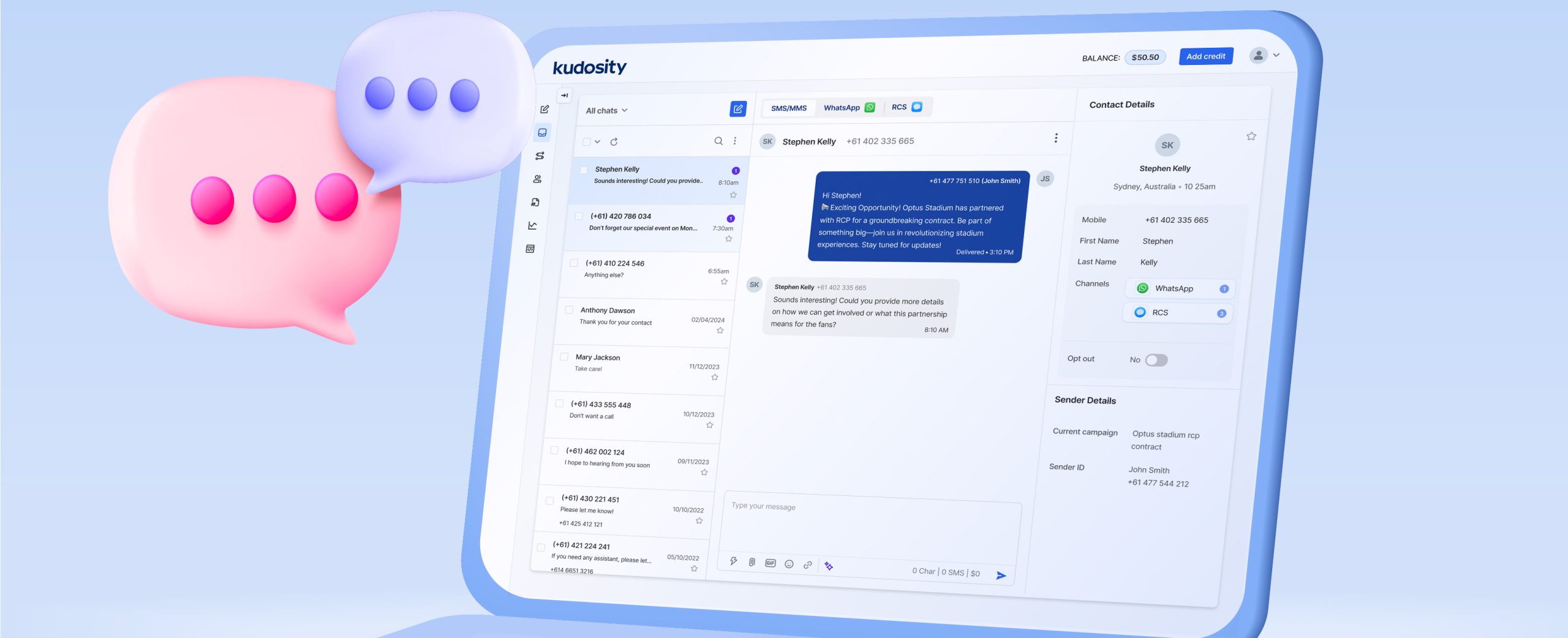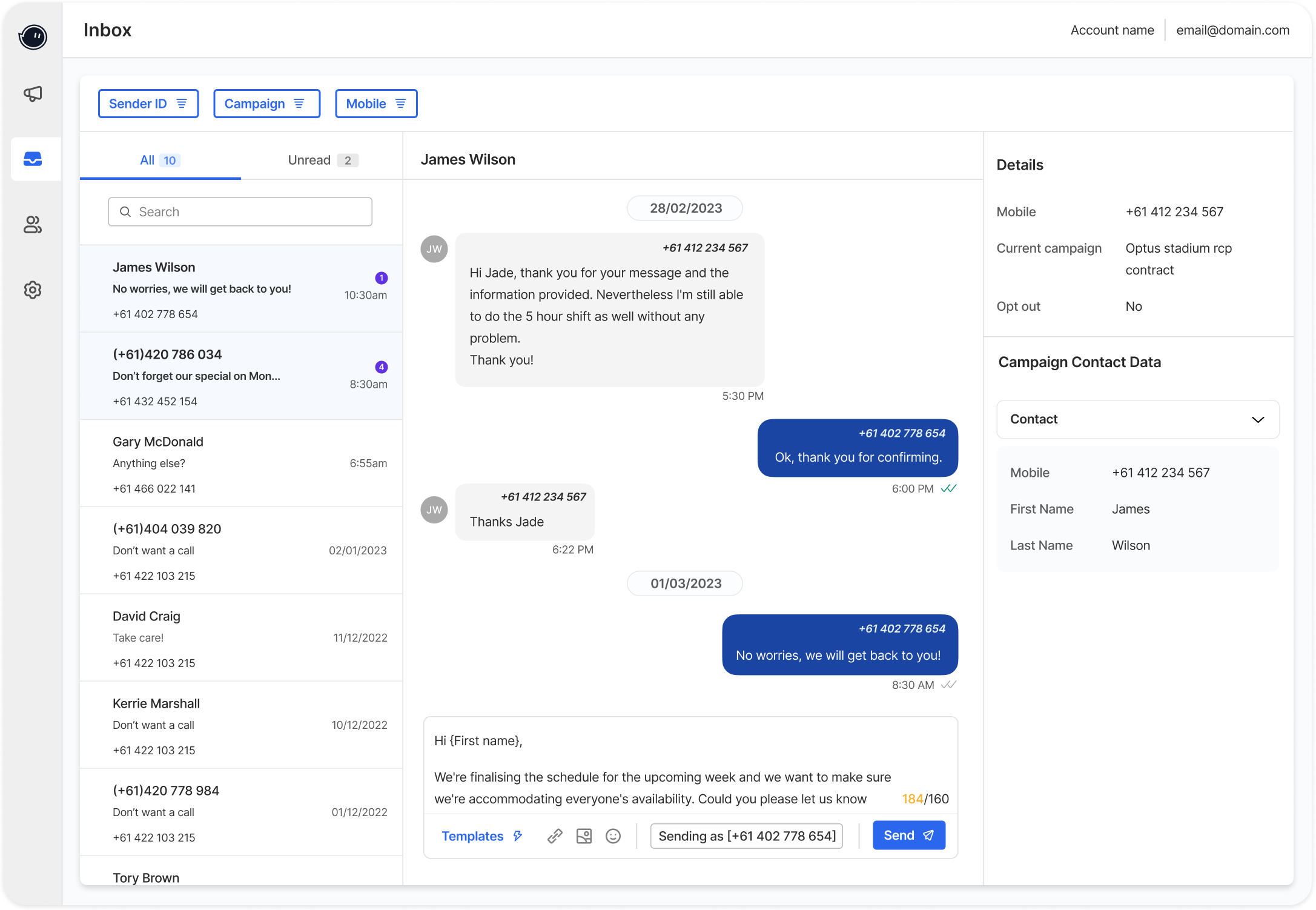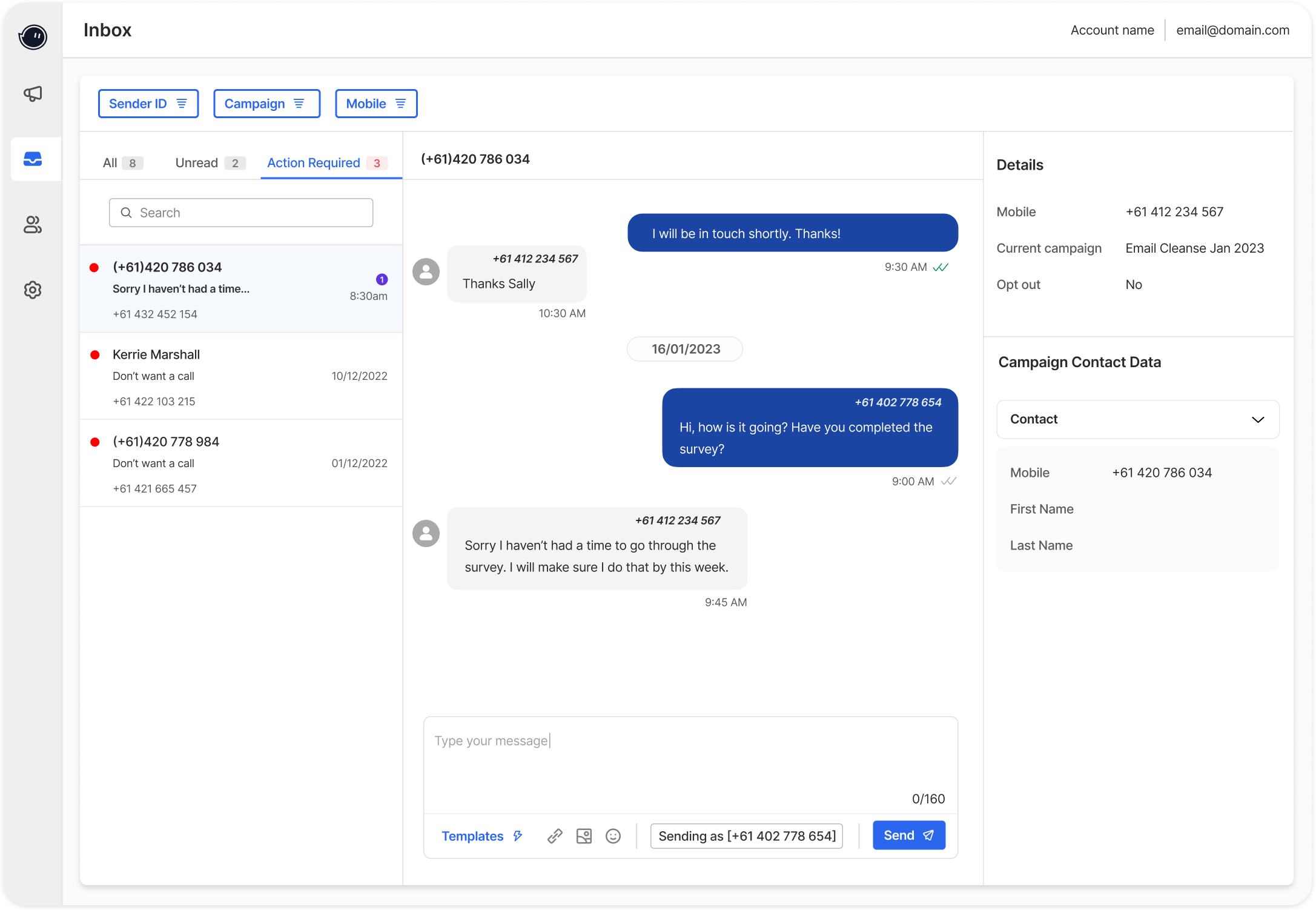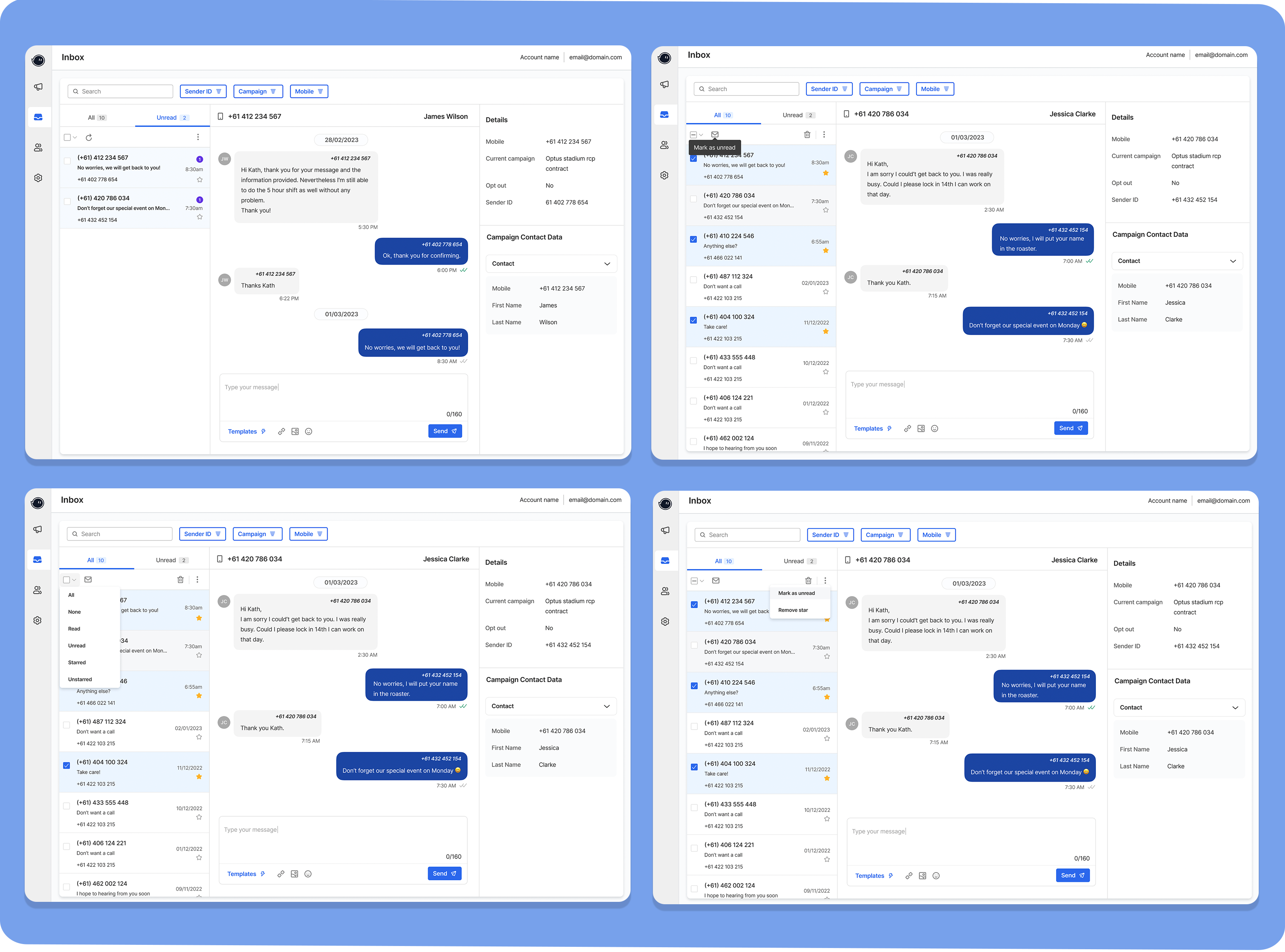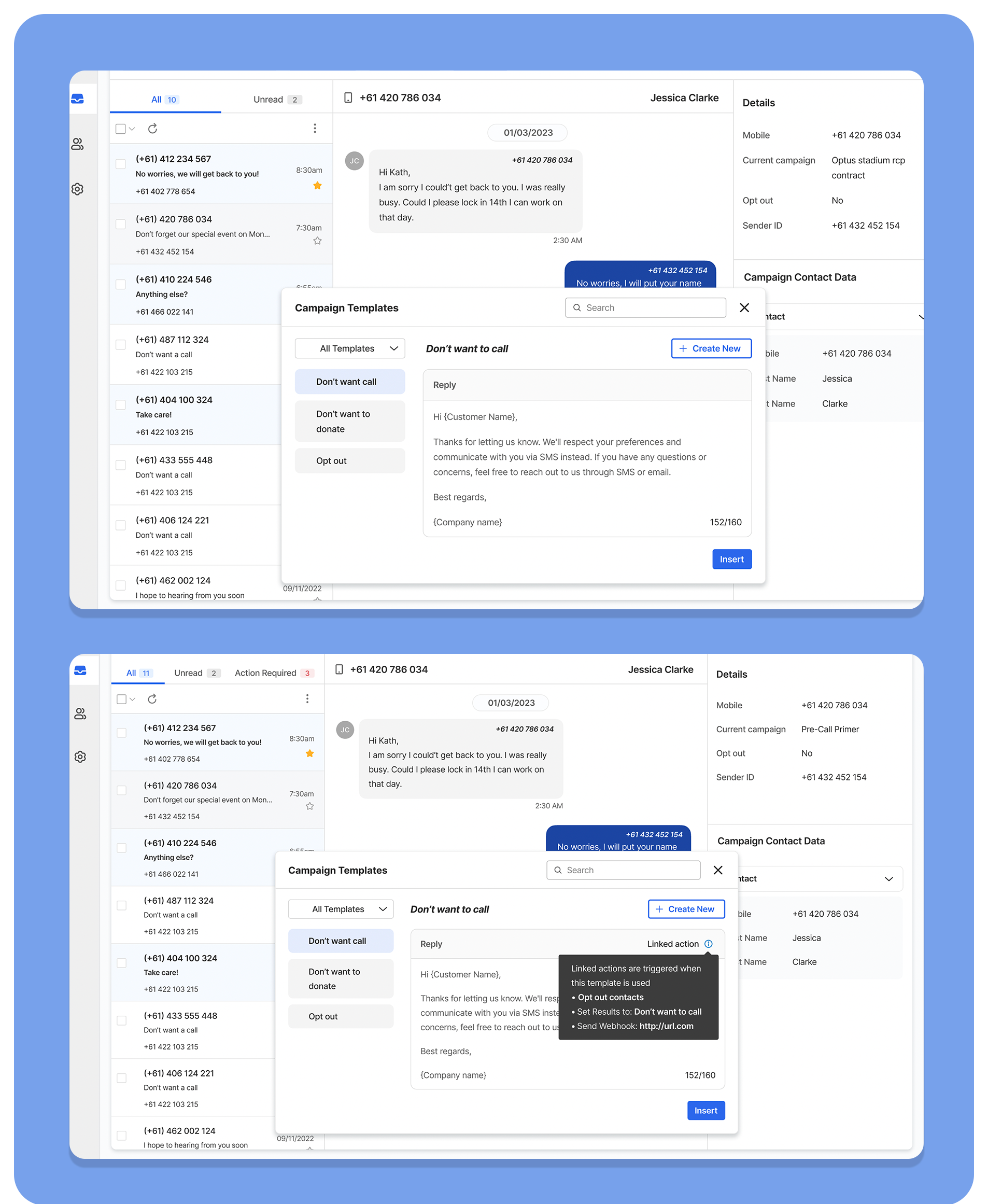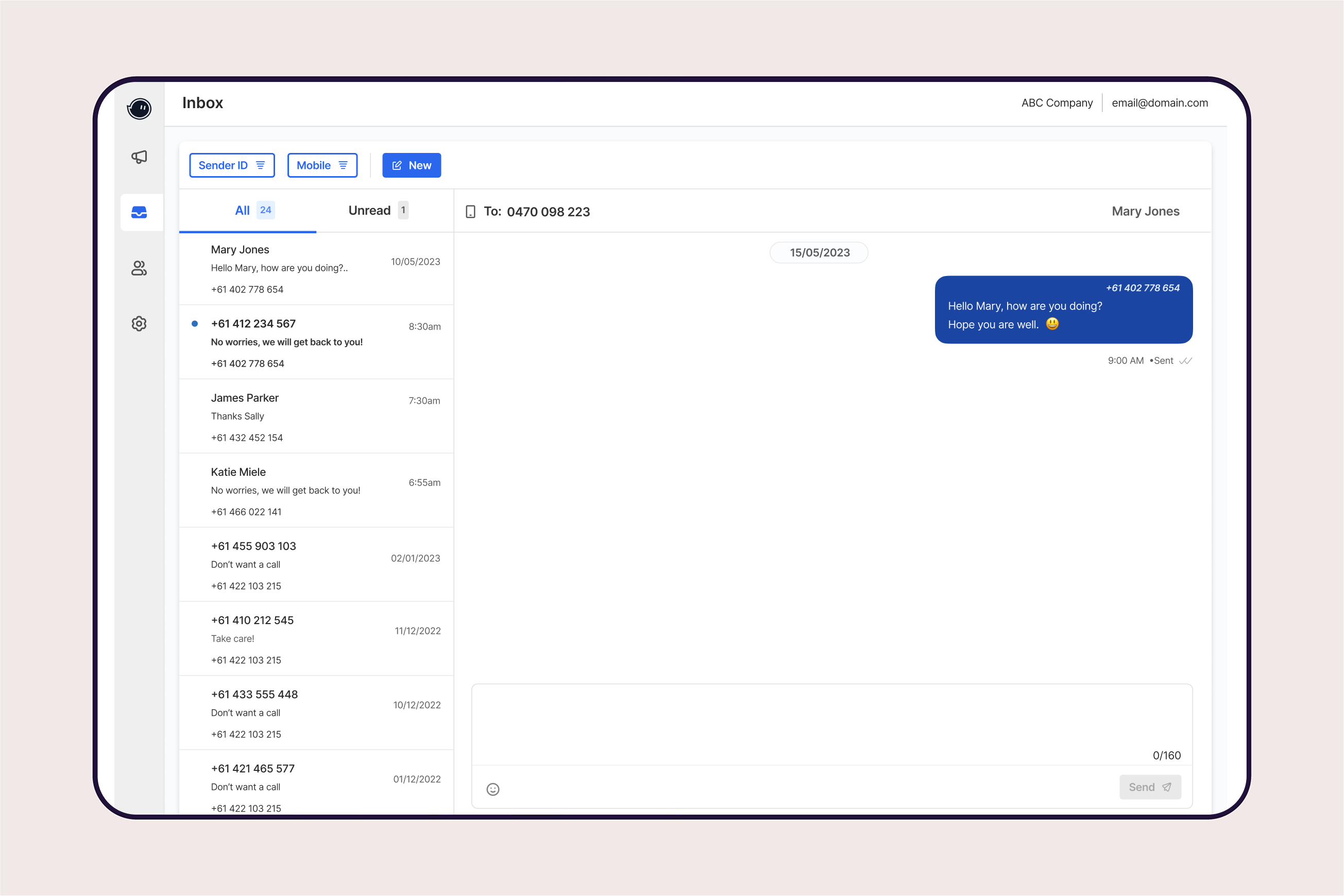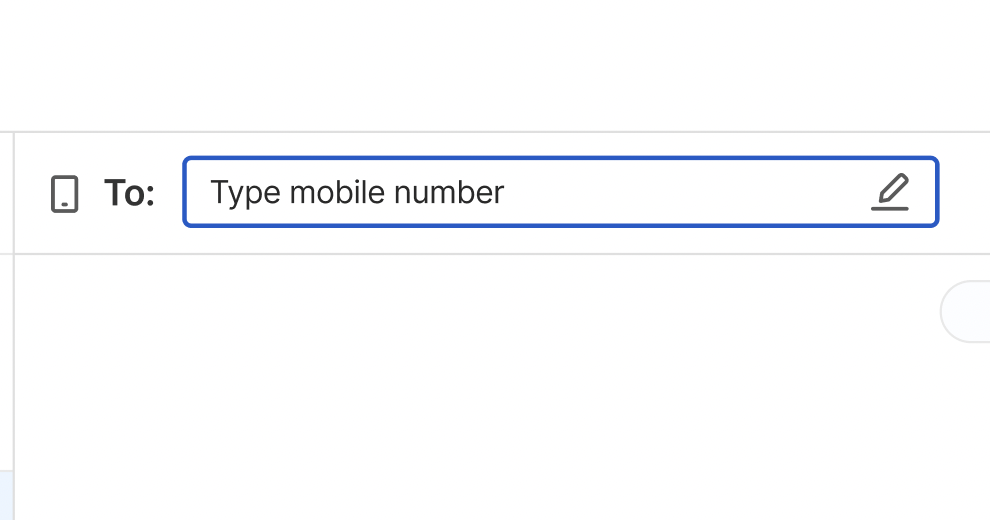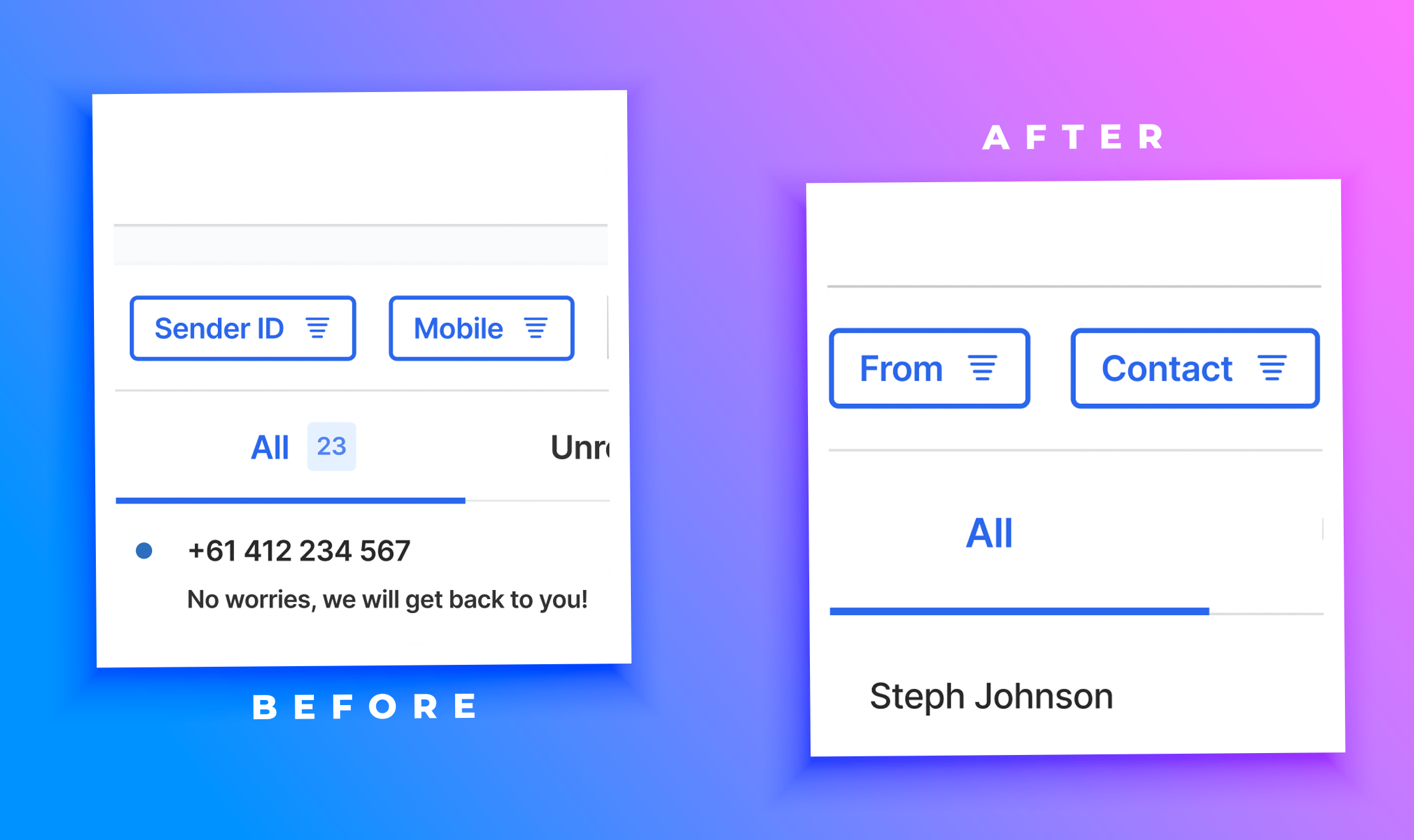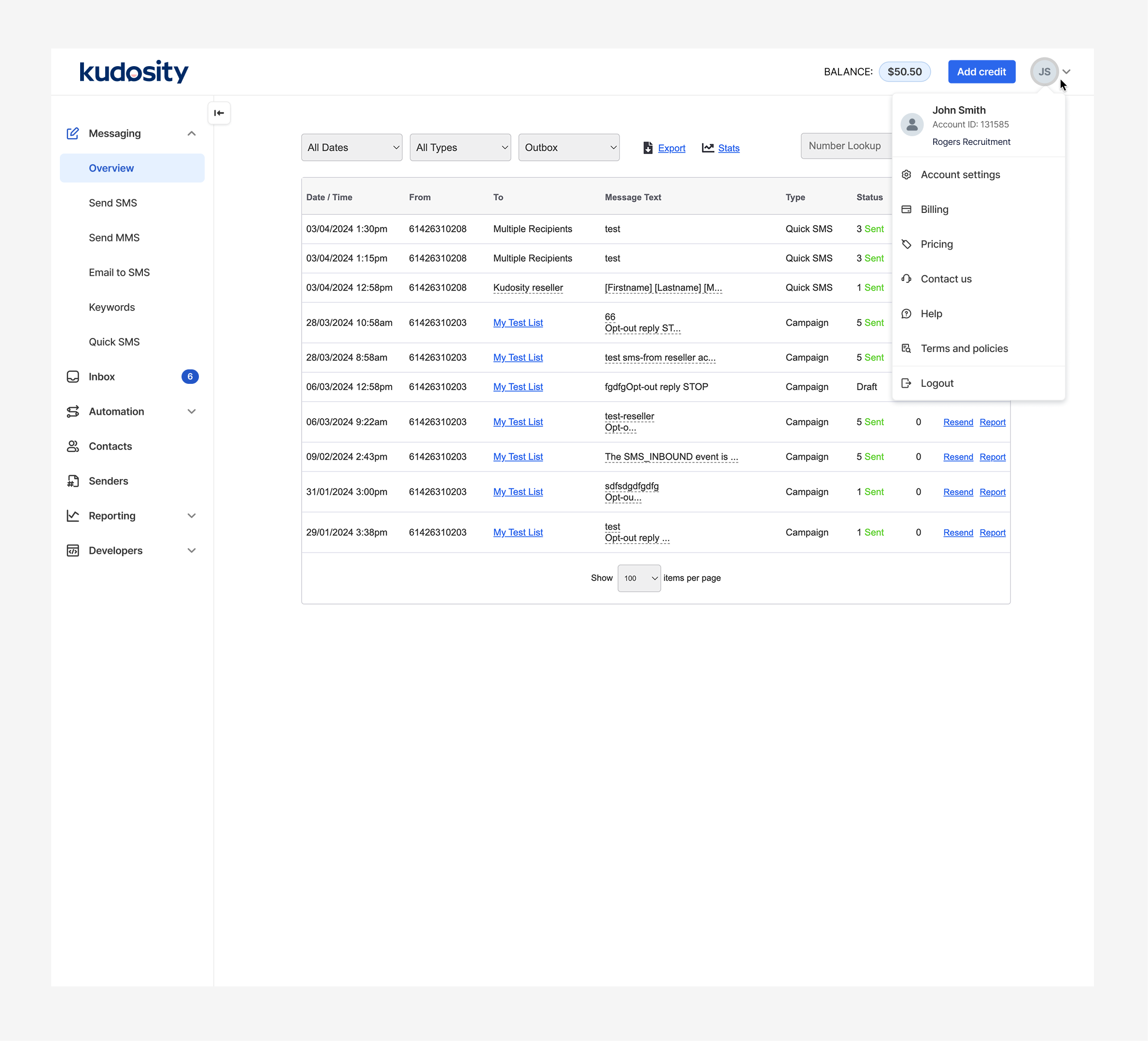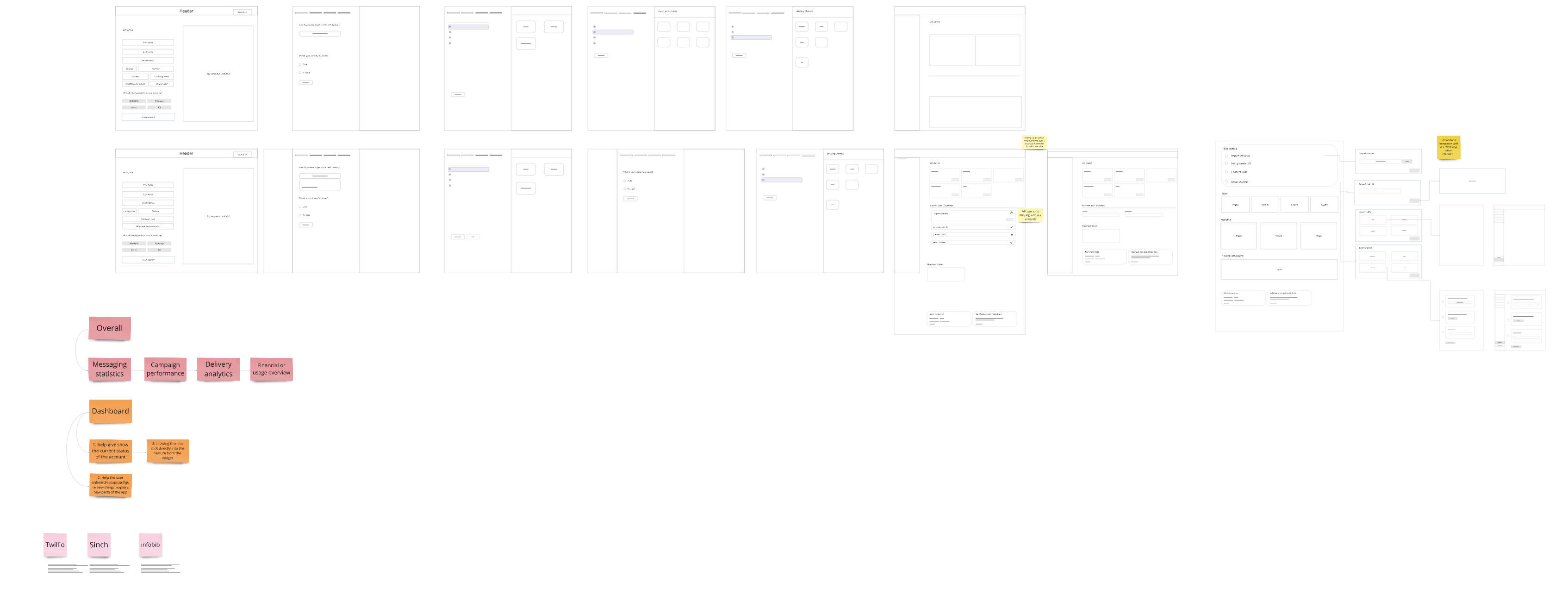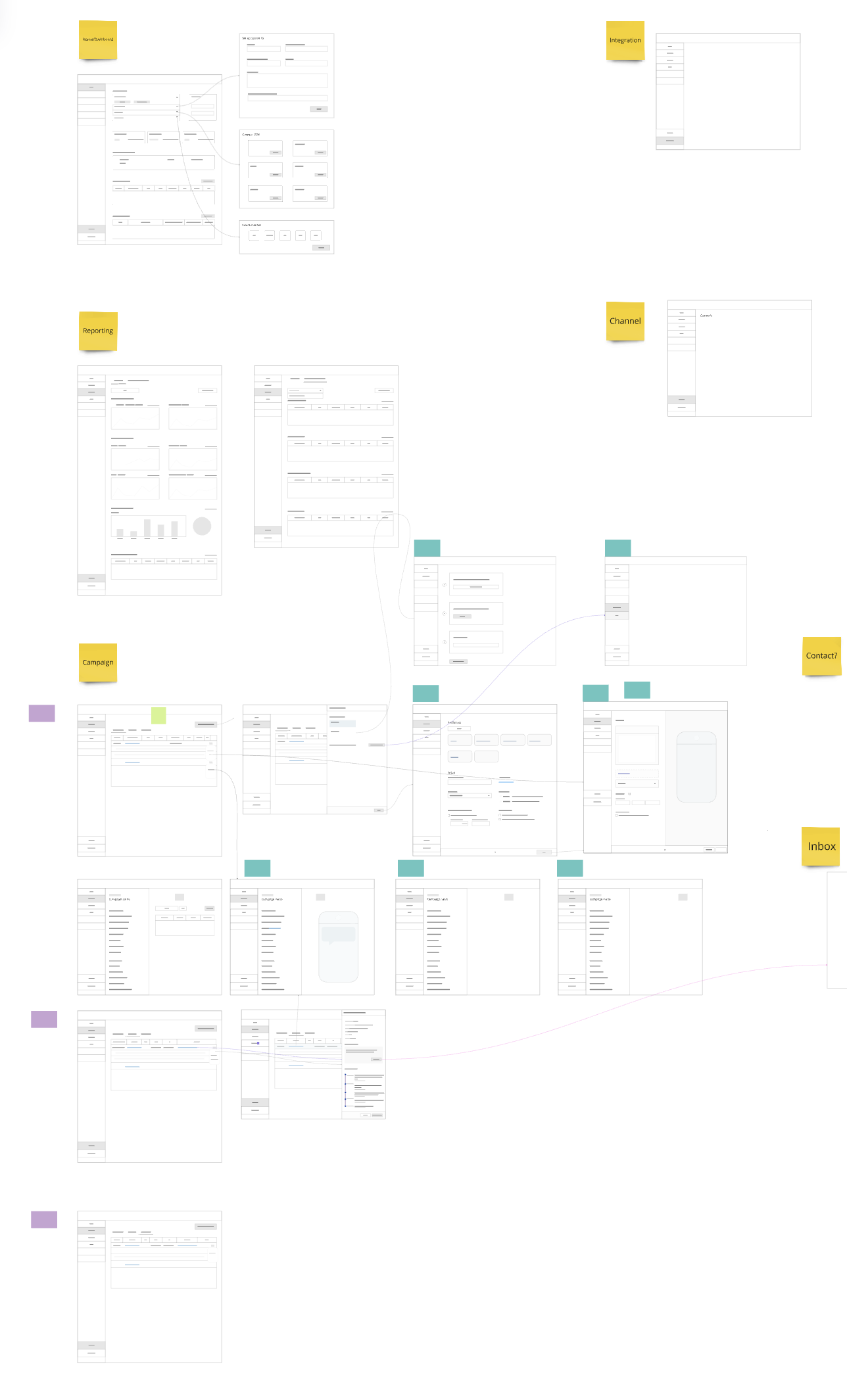- Reverse-engineered competitor workflows – Found reliance on email for operator handoff with minimal workflow transparency.
- Benchmarked against industry leaders – Compared Inbox with Intercom, Mailchimp, and MessageMedia to identify differentiation opportunities.
- Aligned UX with business strategy – Collaborated with the Product Manager to prioritise features that balanced user needs with revenue potential.
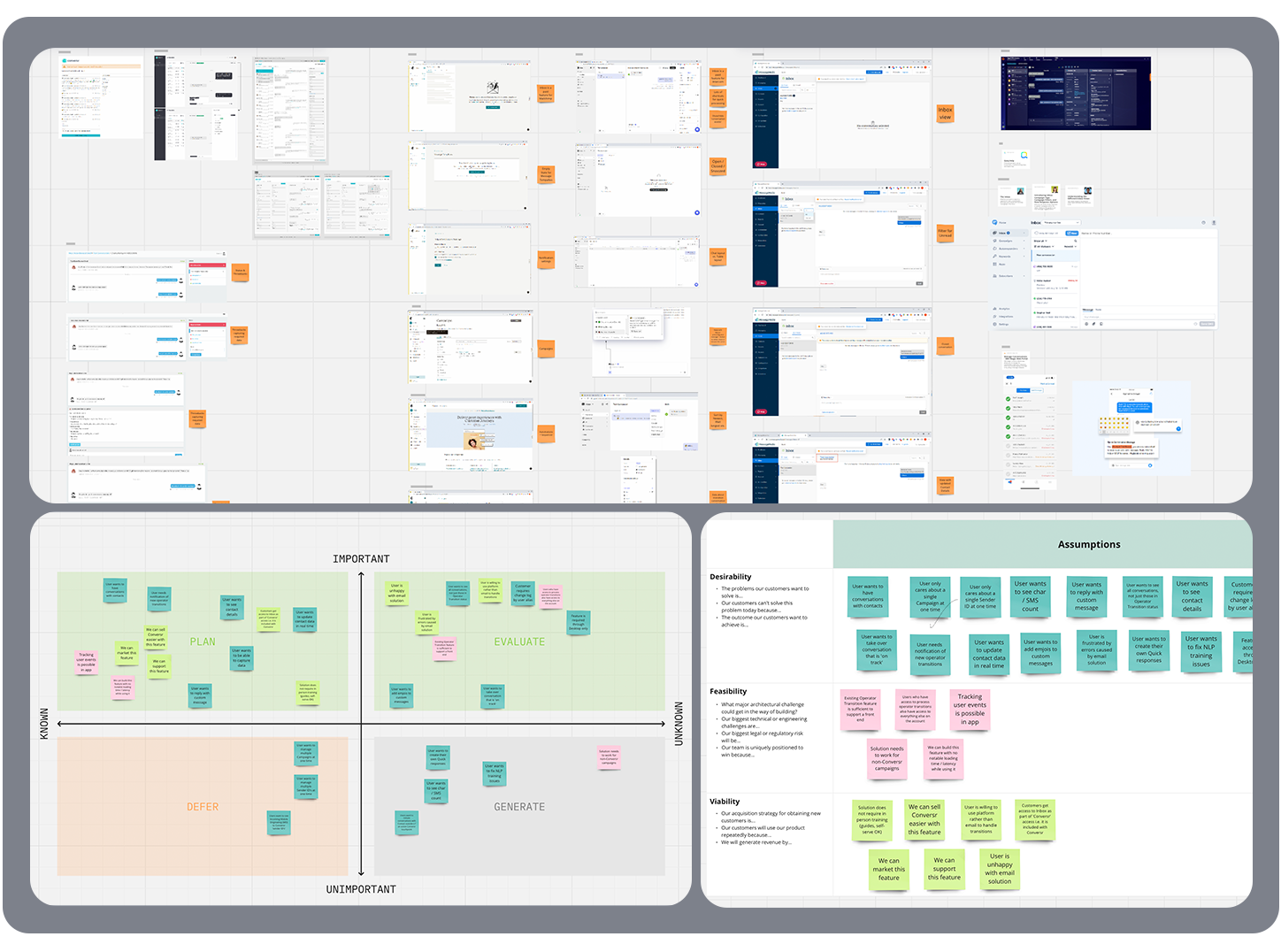
- Led weekly cross-functional syncs – Align on priority features, ensuring scalable and reusable components for the design system.
- Balanced UX vision with technical constraints – Maintained strong user experiences while accommodating development limitations.
- Refined interactions & design system components – Partnered with front-end engineers to ensure seamless implementation, backed by user testing.
- Provided actionable UX recommendations – Delivered insights that shaped development, aligning with best practices and business goals.
- Optimised design-engineering collaboration – Reduced friction, accelerated feature integration, and ensured high-quality execution.
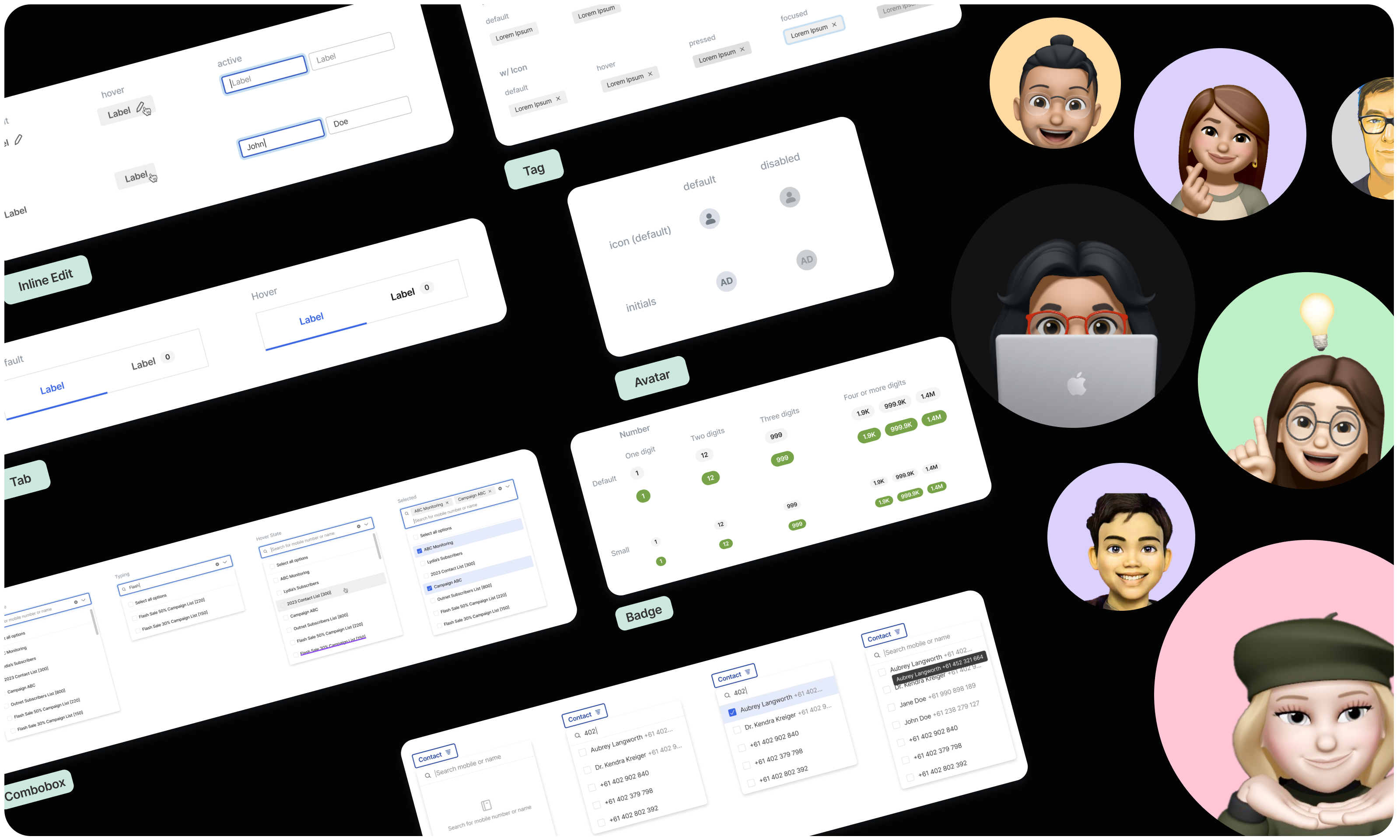
- Aligned user needs with business goals – Mapped insights from internal (Customer Success & Sales) and external (real users) research to refine product strategy.
- Defined a dual-interface strategy – Designed separate UIs for BurstSMS & Conversr based on distinct user needs.
- Validated cross-platform functionality – Ensured Inbox’s seamless usability across both platforms.
- Prioritised MVP for launch – Balanced must-have features with technical feasibility and business impact.
- Refined design through iteration – Conducted 4+ testing cycles, resolving usability challenges and optimising for B2B needs.
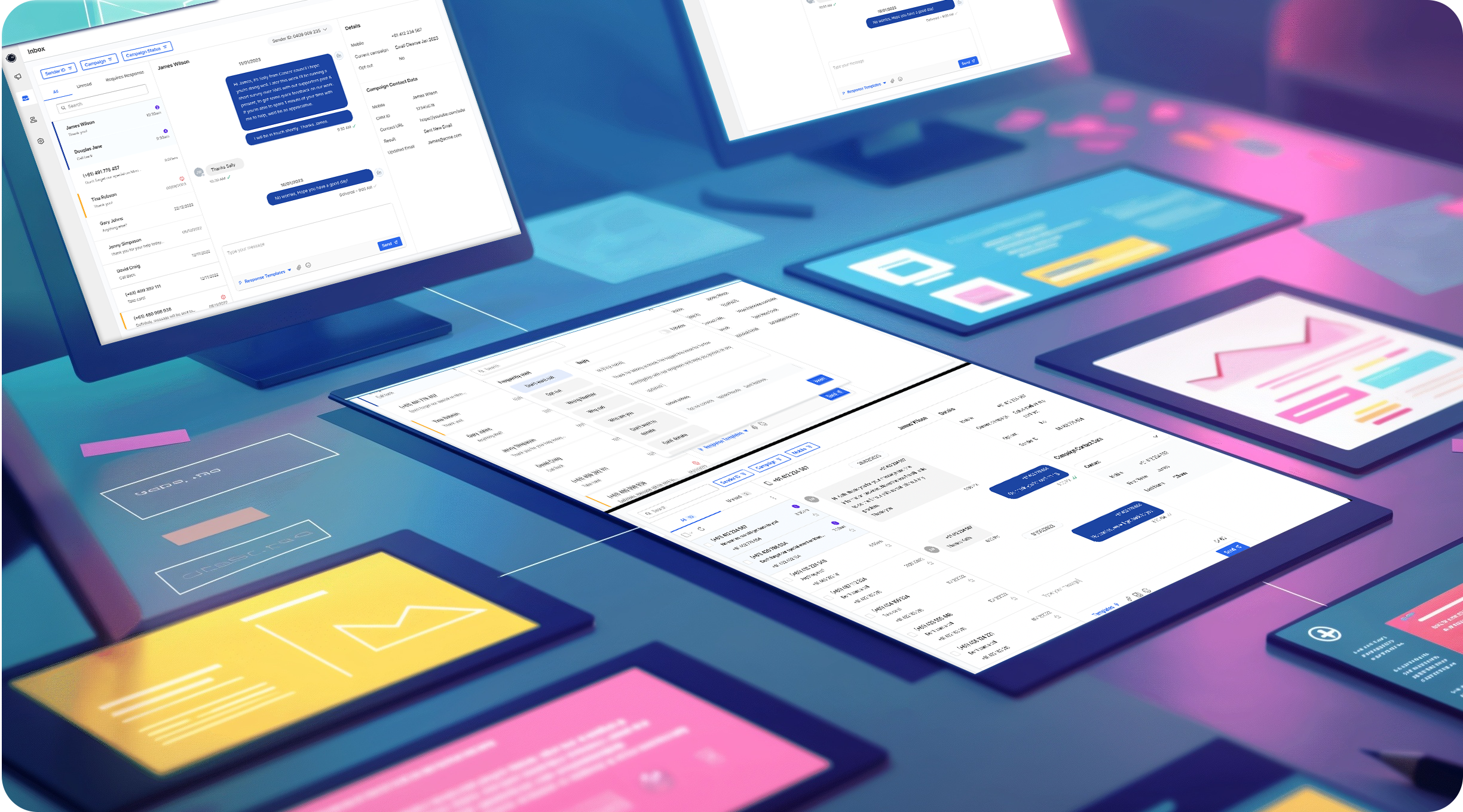
To test the idea early on, I shared a rough design mockup with the Sales and Customer Success teams. Their feedback gave us helpful insights into how potential customers might use the product inbox feature and whether it would bring real value. This helped guide our strategy toward scalable product growth for both TransmitSMS and Conversr. It also gave us a clearer picture of how the solution could be adjusted to fit different setups and work seamlessly for both platforms.

